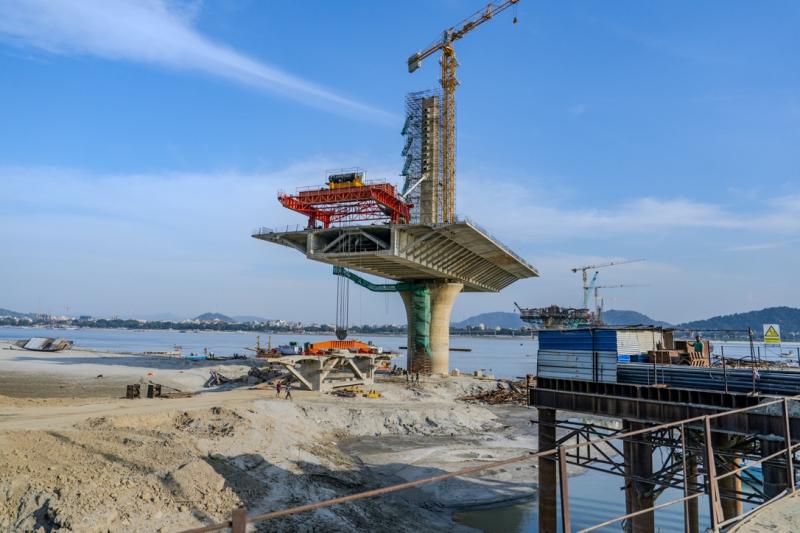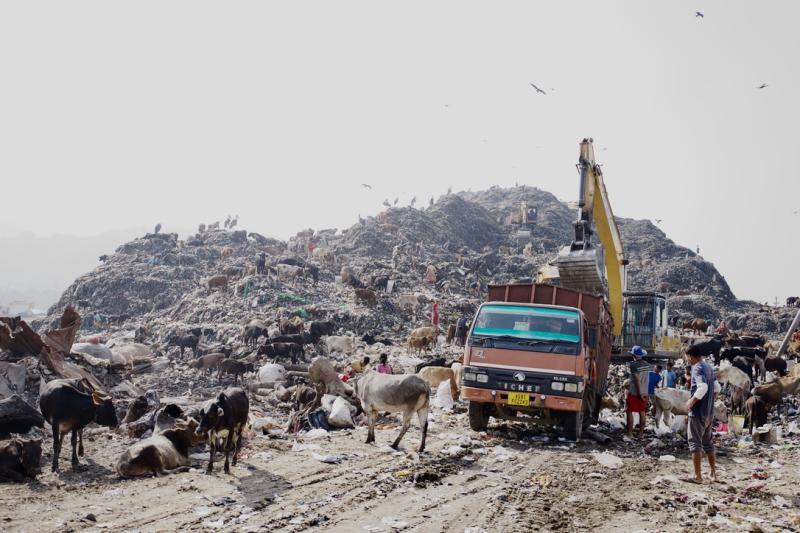1. Where did it all start?
Let me start with a story from Guwahati. Suraj (pseudo name) was born and still resides in the city's low-lying area (Tarun Nagar), prone to urban floods. He and his ancestors have witnessed a profound urban change in Guwahati, now one of the fastest agglomerating cities in northeast India. Suraj recalls that in the 1980s, a wooden bridge passed over the Bharalu River, and the river had currents. The women from the Bodo community used a Jakoi (traditional fishing equipment) to catch fish. Bharalu is a drain now, and this change represents Guwahati and its risk of urban flooding. Suraj further mentioned that in the 1990s, low-lying areas of the city regularly witnessed chest-level floods. During the last ten years, the rainfall has reduced, and floods are perceived as less intense. Between 2020 and 2021, there has been scanty rainfall in the city during monsoons, compared to the unprecedented heavy rain in 2022 and 2024.

In August 2024, unparalleled water-logging occurred in Guwahati, where children and office-going commuters got stuck for hours. Some even had to walk home and only made it home by midnight (Press Trust of India, 2024). It was found that claimed extensive infrastructure, such as a city-wide integrated drainage system and cursory efforts, including encroachment of natural drainage systems and changing the positions of manholes, have failed. Moreover, the city administration has failed to protect its wetlands , which traditionally have protected the city from floods. Apart from several water infrastructure projects, the city is encumbered by flyovers and bridges, transforming Guwahati from a 'city of wetlands' into a permanent construction site and a 'city of flyovers'. Such infrastructure building creates a continuous nuisance for the residents, polluting the micro-climate with dust and noise. It has reduced the well-being of the residents and drastically hampered the quality of life in the city.
Such a sudden fetish overdrive of infrastructure has occurred with the rise of populistic governments in India, which uses (1) infrastructure, (2) religious polarisation and (3) populism to attract urban voters of agglomerating cities such as Guwahati. Among the three, building infrastructure is the central pillar that showcases the electoral promise of delivering a 'world-class city'. However, in that promise, nature (wetlands, hills, and forest areas of the geography) is marginalised, and so are the citizens concerned with it, resulting in waterlogging and urban flooding in the city.
2. Modernity vs Modest
Returning to the urban floods, the modern infrastructure ideal of integrated drainage has failed the city. Instead, 'modest' infrastructure configurations (a combination of ideas, technologies, and actors) seek to reduce their impact using portable water pumps (installed by Guwahati Metropolitan Development Authority and Guwahati Development Department) that remove water quickly by draining it to the Bharalu. Such modest configurations usually work, but not always: once, when the technician responsible for operating the pumps is unavailable (Figure 1), the water remains in the area for 3-4 days. Pumps also tend to fail if and when Bharalu is overflowing. The only vision of modern infrastructure is promised their way, with the city administration marred by corruption and political economy nexus; occupied by building flyovers and land grabbing.
 Figure 1: Portable water pump
Figure 1: Portable water pump
Historically, Guwahati has seen three narratives of flood mitigation between the 1980s and 2020, showing how the relations between water, flood infrastructure and the city have changed over time – 1) 'natural' drainage to urban flooding (early 1980s-mid 2000s, 2) to responding to the floods with modern planning and integrated drainage system (mid-2000s-2012), and 3) to heterogeneous infrastructure and building-with-floods (2013-2020s). From the 1980s to the mid-2000s, these infrastructure narratives were informed by imaginaries of modernity, depicting a story of what infrastructure is and ought to be. From 2013 onwards, we see a shift in the imaginaries that epitomise heterogeneity – with multiple imaginaries embedded in policies and practices that arise from various scales. For instance, specific measures reflecting modernity emerge after a push from the national government. They are also complemented by the measures influenced by modest imaginary arising after negotiations between street-level engineers (bureaucrats) and the citizens. Despite the limitations of modern flood mitigation measures, many city administrators and residents continue to support and invest in them. However, there is limited investment in understanding Guwahati's changing geography and biophysical aspects. A city-wide comprehensive study (street-wide analysis) that can elaborate on flood-prone areas is missing. Guwahati is left with blind faith in new infrastructure and autonomous adaptation measures.

The state uses the modern infrastructure imaginary to legitimise its power and influence in society, using infrastructure for re-election, conditioning residents to believe in 'modernity', even though the infrastructure is built without public participation and has heightened ecological implications. With such a reluctance among city administrators to consider and integrate the modest (alternative) infrastructure imaginary within formal policy processes, non-state regime actors such as academics, activists, and residents showed a preference for alternatives. For instance, the use of portable water pumps has demonstrated their impact on reducing flooding within the low-lying areas of Guwahati. However, such a measure has not been recognised in policy documents. Further, other modest measures used by the marginalised (poor and informal settlements) residents, such as the elevation of existing houses and building dwellings based on 'chang ghar' design, have become common but have again failed to find prominent space in urban policy circles.
Inspiration from the traditional housing system has also inspired the middle-class (upper) citizens of Guwahati to elevate their concrete houses to avoid flood water entering their premises. Considering the geomorphology of the city and the significance of its wetlands for reducing the intensity of flash floods and waterlogging, there is a reverberating plea for restoration of the ecosystem. Local activists and environmentalists have been the most vocal and recognise these 'modest' imaginaries. Acknowledging these alternative measures may question the prevailing knowledge system—modern approaches where technological artefacts are rooted in modernity and large infrastructural development. There are emergent tensions between the state and the city residents questioning the state's ability to deal with climate extremes such as the unprecedented rainfall of June 2022 and August 2024, high vulnerability and the over-reliance on several scientific studies and government-sponsored reports on modern solutions. With the blind concretisation of the city through flyovers, bridges, and commercial & residential spaces, there is no space for nature to spread and emerge. Guwahati as a social place is getting depleted by an overpowering infrastructure drive.
3. Where do we go from here?
Modest flood measures that have emerged from modest imaginaries are slowly seeping into everyday discourse and shaping flood governance, including how mobile pumps have provided relief from drainage congestion and efforts to rejuvenate and protect wetlands. While such practices are increasingly visible, the underlying modest imaginary remains implicit. In this sense, we hope the piece helps us to realise that modern infrastructure may not be able to solve the complex challenges of the global South cities, and it is time to think about infrastructural futures that are realistic and inclusive. The 'modest infrastructure imperfection' has to find a way to challenge the 'modern infrastructure ideal', where citizens and non-state actors have to find a way to oppugn the way infrastructure is being built in Guwahati, with the foundation built on corruption and nexus between the politicians and builders. Nations are not built using concrete and bricks but on ideas and humane approaches towards nature and the vulnerable.
This piece discussed the underlying premise of how urban flood infrastructure operates in Guwahati, India; highlighting the limitations of modern infrastructure, making a case for heterogeneity. The article's premise is to highlight how combining technologies, actors, and power relations shapes unpredictable nature-society relationships, drawing upon the conceptualisations of heterogeneous infrastructure configurations and 'modest imaginary'. Such an imaginary is not an antithesis of modernity but an alternative understanding of the world rooted in uncertainty and an inability to predict and control nature. In the face of changing ecological conditions and a growing acceptance that nature cannot be controlled, we need to make nature more visible—and able to be worked with – instead of representing it behind the taps, pipes, and integrated drains. Adopting a modest imaginary reveals how regime actors show interest in small, cheaper, locally emerged infrastructural configurations.
For more details, you can read the following article.
Vij, S., Karpouzoglou, T., Lawhon, M., Deka, A., & Hazarika, N. (2024). Infrastructure Imaginaries, Past, Present, and Future: Living with the Urban Flood in Guwahati, India. Journal of Urban Technology, 31(4-5), 219-240.